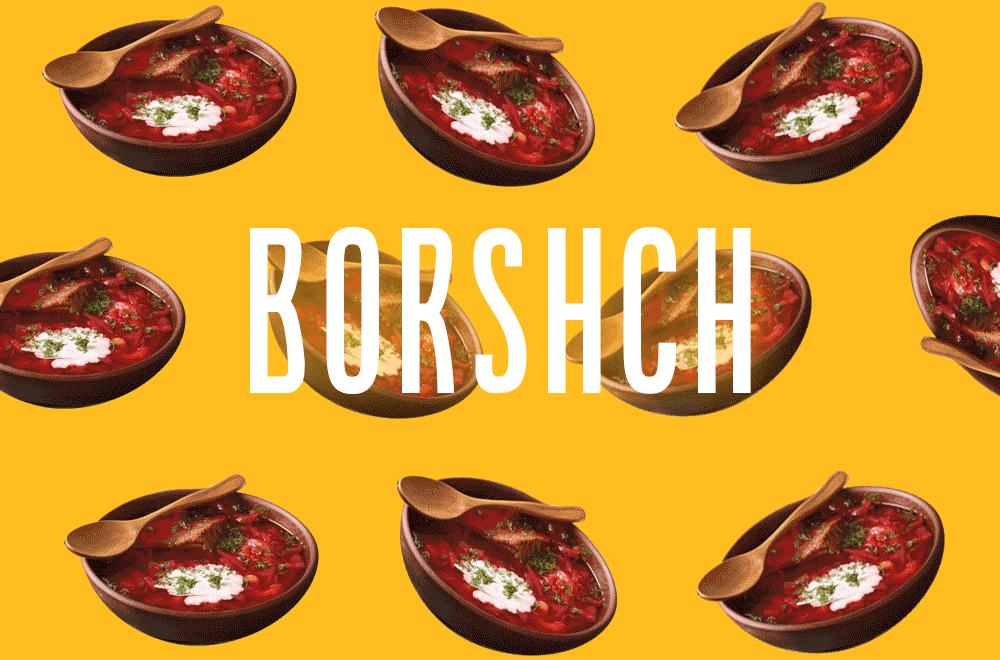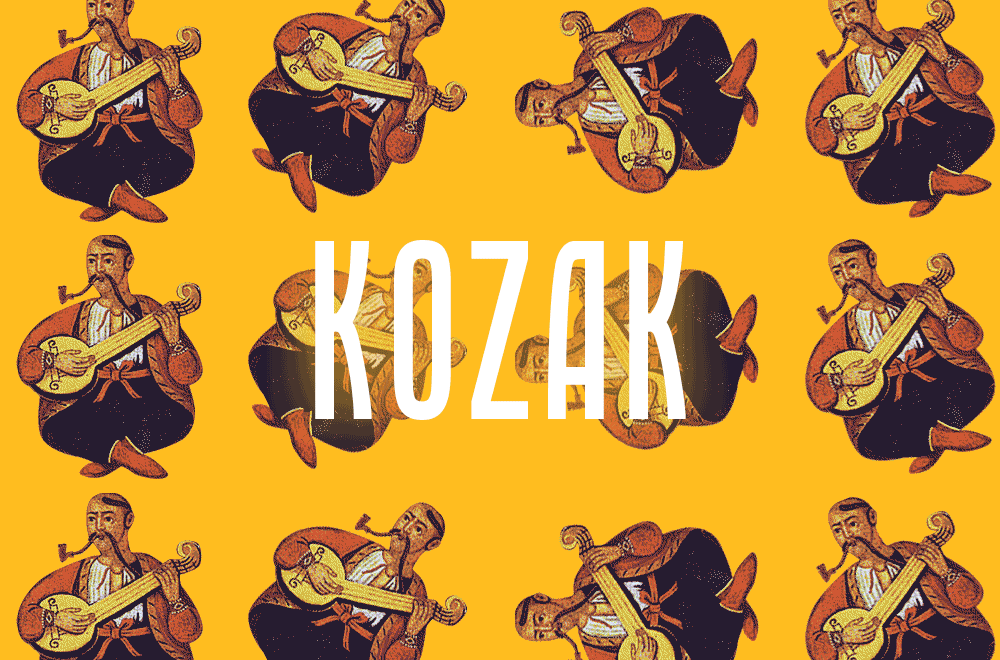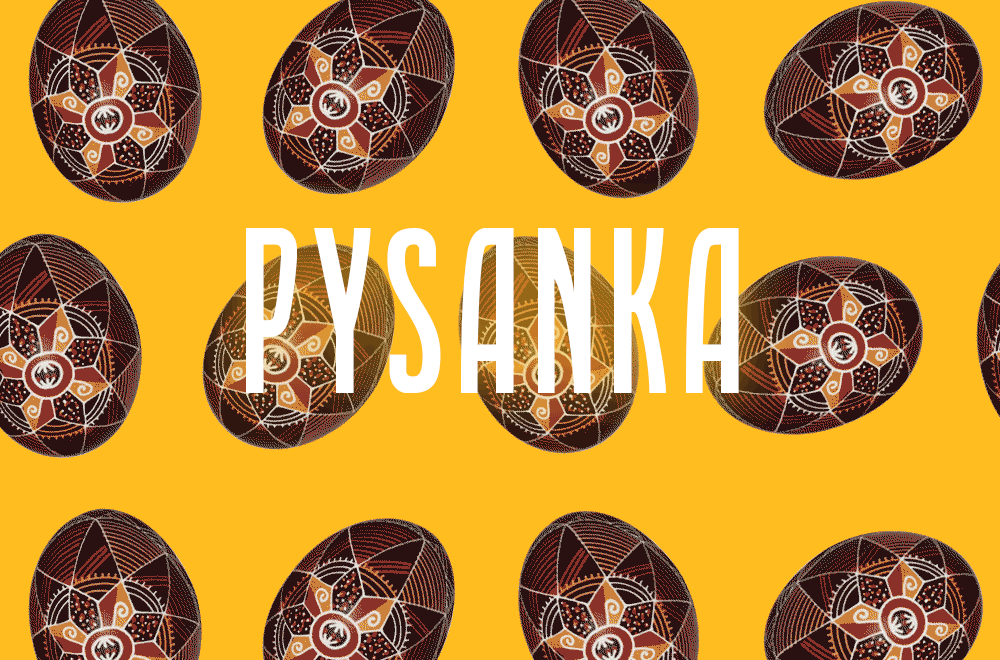* ESC - close the search window
vocabulary
Kozak, hopak, rascist, chumak, and other Ukrainianisms the world understands
26.04.2024
It is a truism that languages never stop evolving. This is a continual process that depends on a multitude of factors. Languages become richer by borrowing words from others, and Ukrainian is no exception: Not only is the Ukrainian language growing, but it is also having an influence on the growth of other languages. Since the onset of Russia’s full-scale invasion, new words and novel usages have entered the Ukrainian language that are often difficult to translate. This is why other European languages — not only those of Slavic origin but also Romance and Germanic languages — have adopted more than a few “Ukrainianisms” (words or slang of Ukrainian origin) as loan words.
The majority of the loan words describe a specifically Ukrainian reality, and are “exotic” additions to languages. What follows is a small glossary of popular Ukrainian words and phrases.
Borshch

At the very top of this list is the word borshch, which was recently recognized by UNESCO as one of Ukraine’s greatest contributions to our global cultural heritage. Despite the efforts of the Russian regime to claim borshch as part of its own cuisine, the dish is eaten worldwide and is now known for the Ukrainian staple that it is. In fact, the phrase “cheap as borshch” can be now found in a number of online dictionaries, including Wiktionary, YourDictionary and WordSense Dictionary.
Chumak
Students of Ukrainian culture will want to know about the chumaks, the salt merchants who were the first Ukrainian “influencers.” Chumaks slowly made their way across the steppes in the South of Ukraine to sell their precious commodity at vendors’ markets. The meandering route the chumaks took was known as “the chumak’s path.” For centuries, visiting chumaks were so ubiquitous in Ukrainian village culture that the name of their occupation became the name for an archetype, the wayward traveler.
Bandura
The bandura is an ancient plucked-string instrument that has been called the Ukrainian lute or sitar. Bandura ensembles have always been welcome abroad, particularly in Asia. In modern times, musicians from the Ukrainian diaspora have added to the bandura’s popularity. “Homegrown” bandura ensembles like the Ukrainian Bandurist Chorus of North America have made the bandura an internationally recognized symbol of Ukrainian culture.
Vyshyvanka
The embroidered shirt is an essential element of Ukrainian folk dress. Non-Ukrainians have long adored the vyshyvanka, buying shirts from Ukrainian artisans and admiring museum exhibits of antique embroidered shirts and modern variations.
Syrnyky
Savory cheese fritters are eaten traditionally in several Eastern European countries like Ukraine, Latvia, Lithuania, Serbia, and Belarus. When they’re made Ukrainian-style they’re called “syrnyky” to differentiate them from similar dishes originating in the cuisines of Western Europe and America.
Hutsul
The Hutsuls are an ethnic subgroup of Ukrainians that are native to the Carpathian Mountains. Hutsuls are known for their “topirtsi” and sheep husbandry. The highland Hutsulian culture is distinct and fascinating not only to other Ukrainians but also to non-Ukrainians.

Kozak
There is no doubt that the Kozaks have made an enormous contribution to Ukrainian culture. Ukraine is known for the history and legacy of the Cossacks (as the etnonym of “Kozak” is usually translated from Russian) internationally, detailing the glory of the Kozak Zaporozhian Sich (Host). The Kozak Zaporozhian Sich was an organized collective of fierce warriors who founded a democratic, fraternal society on an island on the Dnipro River. Kozaks are the subject of countless literary works and have been memorialized in famous paintings like Ilya Repin’s “Reply of the Zaporozhian Cossacks.”
Hopak
Watching a Ukrainian dance group in action can leave you holding your breath: the hopak is so exciting and fast-paced that you don’t want to miss any of it! The hopak is a crowd favorite and of interest to any lover of Ukrainian culture. It has also captivated the creative imagination of painters, writers, musicians, and choreographers worldwide.
Oseledets
If you’re familiar with Ukrainian kozaks, you’ll also know that their traditional hairstyle was the oseledets. Ukrainians will often refer to this enduring style simply and descriptively as a “forelock.” There are many origin stories for the oseledets, but one fact is well-known: You can tell a Ukrainian warrior by his hair.
Kurhan
Kurhans, the huge burial mounds of the ancient Scythians, are important sites of ongoing archeological research. The word “kurhan” isn’t itself of Ukrainian origin, but is instead a loan word from the native language of the Cumans. While Kurhans are not found in great numbers on the territory of modern Ukraine, “kurhan” is a word that has entered our global vocabulary from Ukrainian thanks to the achievements of Ukrainian archeologists.

Pysanka
As long as we are able to “write” pysanky and greet each other with pysanky at Easter, good will conquer evil and the devil will be held at bay. While decorated Easter eggs are an essential part of many Slavic peoples’ folk customs, they are known worldwide by their Ukrainian name.
RELATED: A guide to the history of oppression of the Ukrainian language
Rukh
The meaning of the word “rukh” is not immediately obvious to political observers from outside Ukraine. In Ukrainian, it’s a common word that literally means “a movement of any kind.” Dictionaries may capitalize the word to denote the name of a Soviet-era opposition party that gave rise to a sociopolitical movement that spearheaded Ukraine’s transformation into a modern democracy.
Surzhyk
The word that was once used to denote a mixture of different varieties of grains is now used to describe a blend of distinct languages, most commonly Ukrainian and Russian.
Rascist
“Rascism” is a portmanteau of Ukrainian origin that is made up of the English name for Russia and “fascism.” “Rascism” and its derivative form “rascist” are now used by everyone from political activists and professional journalists to ordinary social media users from around the world.
Orky (Orcs)
The soldiers of the “second most powerful army in the world” are often called “orky” by Ukrainians, after the “orcs” of the classic fantasy trilogy “The Lord of the Rings.”Many non-Ukrainians have noticed the similarities between the brutish Russian forces and J.R.R. Tolkien’s mythical subhuman race. This term for Russian soldiers has been commonly used by English speakers since the beginning of Russia’s unprovoked invasion of Ukraine.
Bliedina
When air raid sirens are used in a region, Ukrainian-speaking users of Telegram will often announce an incoming attack by Russian rockets as the pending arrival of the “bliedina.” “Bliedina” can loosely be translated into English as a “dead-ugly *itch.” This Ukrainian neologism was the first to be added to Urban Dictionary following the full-scale invasion of Ukraine by Russia.
Ukrained
This is how Urban Dictionary defines Ukrainization: When you are Russia and intrude into another country and in response you are humiliated in front of the entire world.
Translation: Lesia Waschuk
Editing: Benjamin Maracek, Terra Friedman King
This publication is sponsored by the Chytomo’s Patreon community
the more you read, the greater the possibilities

